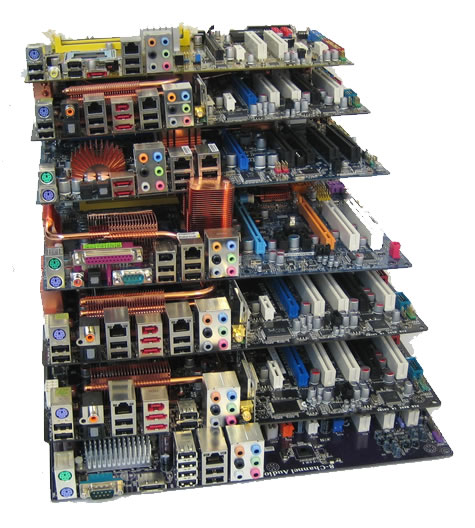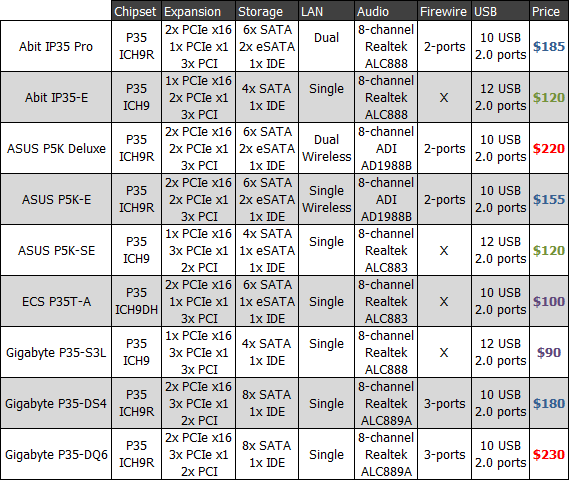
Usually motherboard manufacturers come up with a PCB design for their most prized motherboards and then use the same design with slight variations for their mainstream products. This is the case with the IP35-E as Abit has simply recycled the IP35 Pro layout. All the key components such as the north and southbridge chips are in the same place along with the CPU socket. The 24-pin and 8-pin power connectors are also in exactly the same spot, as are the four DIMM modules.

While the IP35 Pro featured six SATA ports mounted on a 90-degree angle the IP35-E sports four SATA ports mounted vertically. This is fine though as the IP35-E only features a single PCI Express x16 port and the SATA ports are not located behind it meaning that the SATA cables will not come in contact with long graphics cards such as the Nvidia GeForce 8800 GTX. The single IDE port on the other hand is still mounted on a 90-degree angle as it is placed quite close to the PCI Express x16 port.

At the center of the board you will find the P35 north bridge chip which is cooled by a large blue anodized aluminum heatsink. For this model, Abit has just gone with three individual blue anodized aluminium heatsinks that are not connected in anyway. Again for a $120 motherboard the cooling design certainly exceeded all our expectations.

Like the Abit IP35 Pro, the IP35-E version again only features a 4-phase power design which is more compact and easier to cool. A 4-phase power design is fine for a mainstream product though you will not find any 3-phase boards in this roundup. Again the I/O panel space has not been utilized nearly as well as it could have been featuring just a handful of connections. There are two PS/2 ports, one S/PDIF port, six audio jacks, four USB 2.0 ports and a single LAN port.


No comments:
Post a Comment